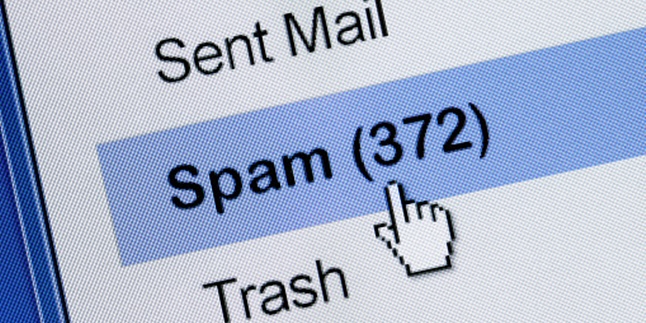Kapanlagi.com - Spam is one of the many popular and widely used words in English today. We often come across the word spam when using messaging applications such as email or social media platforms like WhatsApp, Facebook, and so on. Although it is commonly encountered in daily life, many people are still unfamiliar with the actual meaning of spam.
Meanwhile, in general, the meaning of spam is often interpreted negatively, as messages that are considered very annoying. In emails, spam appears in a separate column box just like the inbox, sent messages, and so on. So, what is spam?
To find out the actual meaning of spam, let's directly refer to the following review that has been summarized by kapanlagi.com from various sources.
1. What is the Meaning of Spam

(credit: unsplash)
As mentioned earlier, the word spam actually originates from the English language. According to oxfordlearnersdictionaries.com, the meaning of spam is advertising material sent via email to people who have not requested it. Yes, spam is indeed closely associated with the digital communication world.
Although it comes from the English language, the word spam has been absorbed into the Indonesian language. This is evident from the presence of the word spam in the Kamus Besar Bahasa Indonesia (KBBI) (Indonesian Dictionary). In KBBI, the meaning of spam is not far different from what has been explained before. According to KBBI, the meaning of spam is unsolicited mail sent via the internet, usually containing advertisements.
2. Types of Spam
There are actually many types of spam. Therefore, knowing the meaning of spam will not be complete without knowing its types. Here are some types of spam that you need to know.
1. Promotional Spam
As the name suggests, promotional spam is a type of spam that is sent with the aim of promoting a product or service. This spam is not very dangerous as it does not come with threats to the recipient. However, promotional spam can be very annoying if received continuously.
2. Malware Spam
The second type of spam is malware spam. Malware spam usually contains malicious files that aim to spread viruses and infect the recipient's operating system. In addition, this type of spam is often used to steal the recipient's data or to damage existing data on the device. Therefore, this spam is very dangerous and should be avoided.
3. Phishing Spam
The third spam is phishing spam. Generally, this spam is a part of malware spam. However, specifically, this spam is more often used for fraudulent practices. The sender of the spam will pretend to be a well-known brand offering promotions and rewards.
4. Scam Spam
Fourth, there is also what is called scam spam. According to its name, this type of spam is sent with the main purpose of deceiving the recipient with a large prize offer. The spam sender will send a message containing an announcement of a prize draw event or something similar. If the recipient is careless, this spam can be dangerous and very harmful.
3. Examples of Spam in Everyday Life

(credit: unsplash)
To better understand the meaning of spam, we also need to know some examples of it in everyday life. In fact, there are many examples of spam that we can encounter in our daily lives. Here are some of them.
1. Email spam
It cannot be denied that spam is closely associated with email. Spam that appears in emails can vary, ranging from promotional spam, malware, to scams. Usually, the email security system will identify an email as spam or not. However, there are times when the security system fails and spam emails still manage to get through.
2. SMS spam
Have you ever received an SMS claiming that you have won a lottery, even though you have never participated in any lottery? Well, SMS messages like this are also examples of spam, especially if they are received continuously.
3. Social Media spam
In this era of social media, spam is also becoming more rampant. Spam can be found in various social media platforms, such as WhatsApp, Telegram, Twitter, Instagram, Facebook, and so on. It is not limited to chat messages only, sometimes spam can also appear in the form of repetitive comments.
4. Causes of Spam

(credit: unsplash)
After knowing the meaning of spam, types, and examples, what needs to be known next are the causes of spam. This is important so that we can be more careful and cautious in order to avoid spam, whether it's through SMS, email, or social media. Here are some causes of spam.
1. Personal data leakage
Personal data leakage is one of the main causes of spam. This usually happens without us realizing it, when we fill out certain data. So before filling out personal data on a platform, make sure to prioritize security to prevent spam from occurring.
2. Numbers and emails found randomly
Spam senders obtain our numbers and emails randomly.
3. Frequently entering personal data on online platforms
Not all online applications can be trusted, irresponsible platforms can sell your data to spam senders.
Those are some reviews about the meaning of spam, along with its types and examples in everyday life. Hopefully, this information is useful and can broaden your knowledge!
(kpl/gen/psp)
Disclaimer: This translation from Bahasa Indonesia to English has been generated by Artificial Intelligence.















